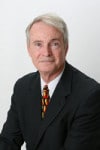Civil Conspiracy

Brien Roche
Two types of civil conspiracy claims are recognized. One of them is founded on common law. The other is created by statute.
Civil Conspiracy-Common Law
A common law claim must allege several different elements. The first element is a combination of two or more people. The second element is that the combination must be to accomplish something by some concerted action. The third element is that there must be a criminal or unlawful purpose or a lawful purpose to be achieved by criminal or unlawful means. The fourth element is resulting damage. As part of that fourth element the damage must have been caused by the acts of the defendant in furthering the conspiracy.
Civil Conspiracy-Statutory
The Virginia Code section that allows for a civil conspiracy is found in Virginia Code Section 18.2-499. The elements of that claim are first a combination of two or more persons. Secondly it must be for the purpose of willfully or maliciously injuring someone in their reputation, trade, business or profession. Thirdly there must be damage that results from that conduct. These claims must be proven by clear and convincing evidence.
First Element
The first element of both claims is the same. The common law claim only requires proof of a tacit understanding. The statutory claim requires that the plaintiff prove that someone combined, associated, agreed or mutually undertook or concerted together with someone else.
The two or more person requirement is fairly rigorous. These claims recognize an intracorporate immunity doctrine. What that doctrine says is that persons within a corporate entity acting within the scope of the employment only constitute one person. If however one person is acting outside of the scope of employment, then the two person requirement may be satisfied. A person steps outside the scope of the employment in that instance if they are acting on some external independent and personal motive. A corporation cannot conspire with a wholly-owned subsidiary. Partners cannot conspire when they are acting within the scope of their partnership. In the context of a breach of contract, to have two or more conspirators, there must be a third party to the contract.
Civil Conspiracy-Common Law Claims
The common law claims also require some criminal or unlawful purpose or some lawful purpose by criminal or unlawful means. In other words there must be some actionable claim for the underlying alleged wrong. For instance employees forming a combination to breach their contractual, employment, fiduciary or other duties.
Statutory Claims-Second Element
The second element of the statutory claim requires only proof of legal malice. That means that the defendant acted intentionally, purposely and without lawful justification. It does not require actual malice. An element of this second claim of statutory conspiracy is there must be injury to the reputation, trade, business or profession. This does not apply to personal or employment interests.
Procedure
Also as part of the claim under the statute there may be a claim for a permanent injunction.
Furthermore as part of pleading such a claim it is necessary to set forth the factual details of the time and place of the conspiracy. In addition the alleged effect of the conspiracy should be pled.
Limitations
For purposes of the statute of limitations, the cause of action arises when the plaintiff first suffers some injury. If the injury is personal injury, then there is a two (2) year statute. If the injury is for injury to property then there is a five (5) year statute.
Call, or contact us for a free consult. Also for more info on civil conspiracy see the Wikipedia pages. Also see the post on this site dealing with contract issues.


